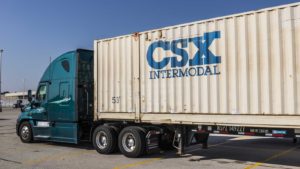3 Stocks That Will Be Hit Hardest by the 2024 Baltimore Bridge Disaster
As the state of Maryland works to recover from the Baltimore bridge disaster, potential long-term financial consequences are becoming present. With each passing day, the gargantuan task of recovering and removing debris from the seafloor slows Baltimore’s local economy. Currently, the major hurdle for the Unified Command handling the situation consists of removing enough containers from the sunken cargo ship to re-float it.
While catastrophic, both the government and the businesses that rely on the Port of Baltimore have started establishing workarounds. For automobile importers and exporters, which made up 20% of the port’s daily traffic, the fix has been as simple as rerouting to other East Coast ports. For others, the narrow channels the U.S. military has helped create have been enough to allow around 68 ships to pass through in the last few weeks.
Unfortunately, some companies will be unable to avoid the greater ramifications of the port’s near-complete closure. Ultimately, this might put some stocks at risk.
C. H. Robinson Worldwide (CHRW)

A cornerstone of the East Coast’s logistics industry, C. H. Robinson Worldwide (NASDAQ:CHRW) specializes in supply chain connectivity. The company’s direct service logistics platform connects businesses with transportation providers, allowing for a streamlined process of freight distribution. While CHRW does not own any form of freight-moving vehicle, its profits exist in the margins of providing the best possible service to customers.
Therefore, it’s concerning that CHRW’s abilities to operate in the Baltimore-Washington D.C. metro area are heavily impacted. The loss of the bridge and port access in Baltimore is a major blockage in a vital artery for shipping routes. With both land and sea traffic complicated on the Eastern seaboard, much of the simplification CHRW offers cannot be achieved.
Thus, it may be likely that CHRW, which has already seen a significant 19% loss in share value in the last 6 months, may see further dips.
CSX (CSX)

A key rail freight company, CSX’s (NASDAQ:CSX) limited access to coal through the Port of Baltimore could result in losses. With a vast rail network across the East Coast, CSX can route many trains around the Baltimore bridge disaster. However, despite donations and opening routes for existing customers, CSX is bracing for decreased coal shipping revenues as a result of the port’s inaccessibility.
For reference, last year CSX generated over $14 billion in revenue, with 16% of that being from coal shipping. Though it’s hard to say exactly how much revenue the company could lose due to delayed coal deliveries, the risk is present. Moreover, the company has opted to keep its Curtis Bay coal pier operational, despite the bridge collapse.
Ultimately, the complication of resource access at a vital intersection for CSX’s shipping routes could have unpredictable downstream effects and make CSX one of the stocks at risk thanks to the Baltimore bridge disaster.
Carnival (CCL)

For Maryland and the surrounding area, the Baltimore bridge disaster may make cruise vacations harder to get to. This is especially the case for customers of Carnival (NYSE:CCL), as Baltimore represented one of its year-round service ports. For the company, the port offered a centrally located start for voyages due to the surrounding airports and large populations.
Considering the company reported a loss in February of $214 million for fiscal Q1, this disaster hurts even more. The cruise line will now have to send customers out of other nearby ports. This will likely increase operating costs, and such an increase could add strain to the already decreasing profitability of the company.
As such, investors in CCL stock should be cautious of how this major port closure could further damage the company. Though Carnival may be one of the largest cruise ship companies, it already has significant financial storms to contend with.
On the date of publication, Viktor Zarev did not have (either directly or indirectly) any positions in the securities mentioned in this article. The opinions expressed in this article are those of the writer, subject to the InvestorPlace.com Publishing Guidelines.

